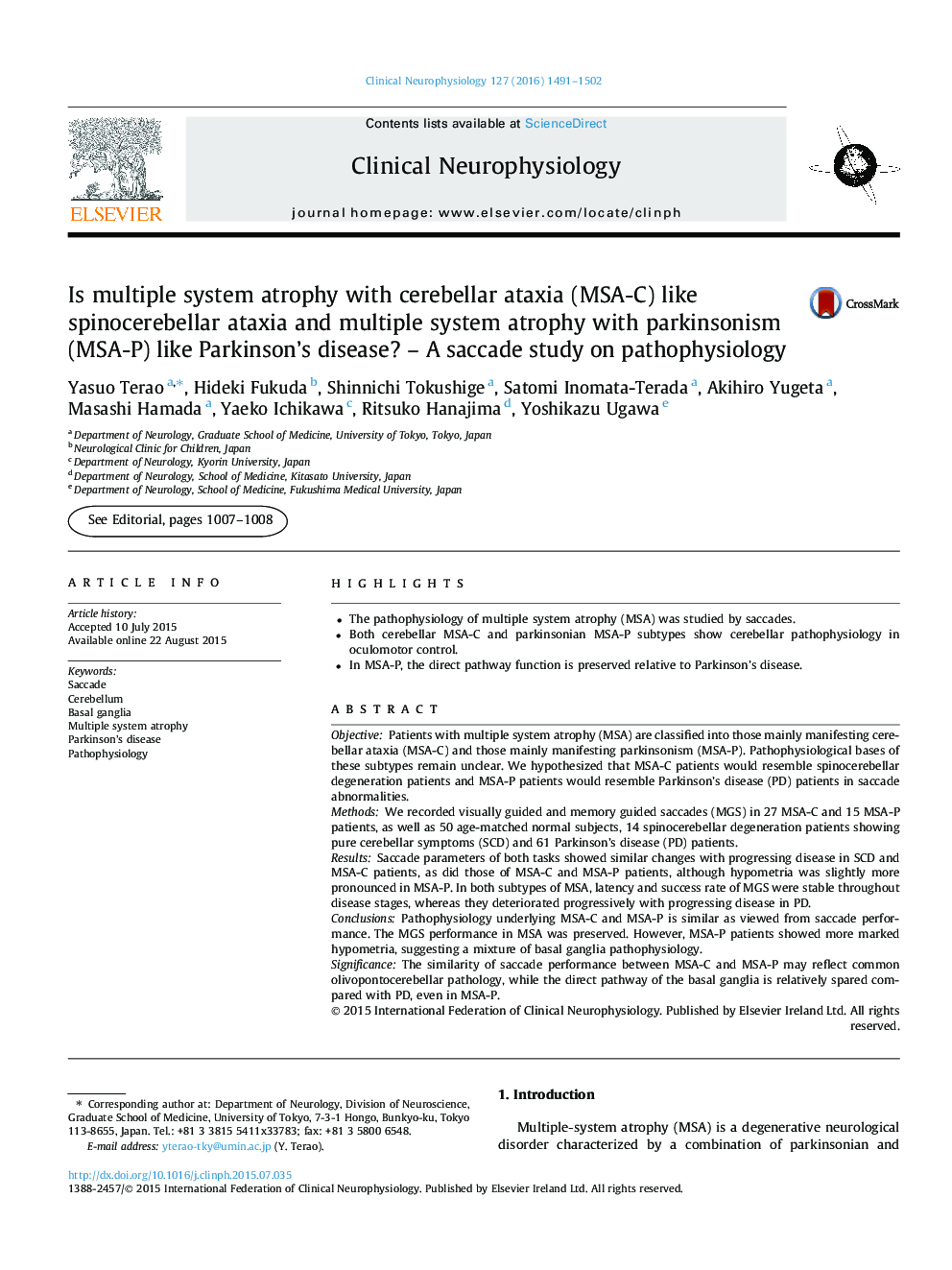| Article ID | Journal | Published Year | Pages | File Type |
|---|---|---|---|---|
| 6007634 | Clinical Neurophysiology | 2016 | 12 Pages |
â¢The pathophysiology of multiple system atrophy (MSA) was studied by saccades.â¢Both cerebellar MSA-C and parkinsonian MSA-P subtypes show cerebellar pathophysiology in oculomotor control.â¢In MSA-P, the direct pathway function is preserved relative to Parkinson's disease.
ObjectivePatients with multiple system atrophy (MSA) are classified into those mainly manifesting cerebellar ataxia (MSA-C) and those mainly manifesting parkinsonism (MSA-P). Pathophysiological bases of these subtypes remain unclear. We hypothesized that MSA-C patients would resemble spinocerebellar degeneration patients and MSA-P patients would resemble Parkinson's disease (PD) patients in saccade abnormalities.MethodsWe recorded visually guided and memory guided saccades (MGS) in 27 MSA-C and 15 MSA-P patients, as well as 50 age-matched normal subjects, 14 spinocerebellar degeneration patients showing pure cerebellar symptoms (SCD) and 61 Parkinson's disease (PD) patients.ResultsSaccade parameters of both tasks showed similar changes with progressing disease in SCD and MSA-C patients, as did those of MSA-C and MSA-P patients, although hypometria was slightly more pronounced in MSA-P. In both subtypes of MSA, latency and success rate of MGS were stable throughout disease stages, whereas they deteriorated progressively with progressing disease in PD.ConclusionsPathophysiology underlying MSA-C and MSA-P is similar as viewed from saccade performance. The MGS performance in MSA was preserved. However, MSA-P patients showed more marked hypometria, suggesting a mixture of basal ganglia pathophysiology.SignificanceThe similarity of saccade performance between MSA-C and MSA-P may reflect common olivopontocerebellar pathology, while the direct pathway of the basal ganglia is relatively spared compared with PD, even in MSA-P.
